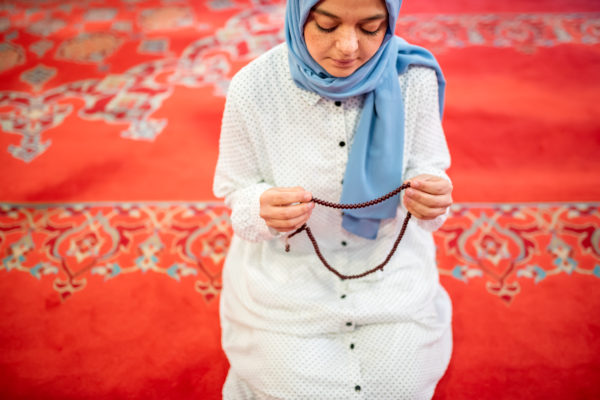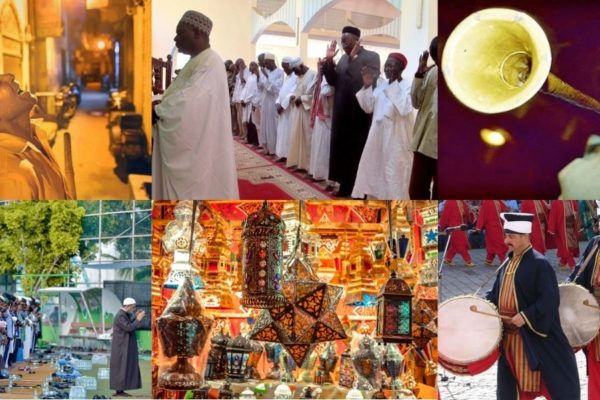What are some of the perspectives and traditions around death in Islam?
What are some of the perspectives and traditions around death in Islam?
“O my people, this worldly life is only [temporary] enjoyment, and indeed, the Hereafter – that is the home of [permanent] settlement.” – Quran 40:39
Death in Western culture is often a taboo subject left for funerals. It is commonly seen as something not to be discussed and rather dealt with by outsourced professionals like undertakers and funeral directors.
However, Islam presents a refreshing stance on death, both in theory and the rituals surrounding death. Whereas we may be culturally persuaded to prolong thinking of death in the West, Islam requires us to ponder our death to better live our existence. Additionally, Islamic rituals around death contrast those of traditional Western burial.
Read on to discover the Islamic perspective on death, and to explore traditional Islamic death practices.
How Islam Views Death
The concept of death in Islam calls upon believers to live with an awareness of impermanency. Instead of ignoring death, we are asked to live with the knowledge that our lives in dunya are fleeting: only our good deeds remain.
There is a hadith stating, “When a child of Adam dies, his deeds are over except through three things: perpetual charity, a useful knowledge, or a good child.”
This awareness of impermanence provides mindfulness that our time here is short and should be used as best as possible. It also calls us to have clean intentions and deeds. Though some may view remembering one’s death as dark thought to live with, it can be quite freeing. There is comfort in knowing we will return to Allah in the time he prescribes for us, and that it is our job to live with as much purity and submission as possible.
Aya 39:42 of Az-Zamar states, “It is Allah Who takes away the souls of people at the hour of their death, and takes away at the time of sleep the souls of those that have not died. Then He retains the souls of those against whom He had decreed death and returns the souls of others till an appointed time. Surely there are Signs in this for a people who reflect.”
Death Rituals in Islam
The experience of post-death rituals in Islam varies from the standard Western funeral of coffin burial or cremation. In Western terms, burial in Islam would be considered a “green burial” or burial of the body directly into the ground as soon as possible. But first, the body must be carefully washed, wrapped, and prayed for. Here are the steps of a traditional Islamic funeral (some cultural variations may exist).
Offering Last Shahada
If one knows they are close to death, it is important to offer Shahada, the recitation that “lā ʾilāha ʾillallāh, Muḥammad rasūlu-llāh,” “there is no god but God and Mohammed is his messenger.” This is meant to offer solace and peace for the dying and solidify one’s commitment to Islam.
When the deceased passes, it is custom to say, “Inna lillahi wa inna ilayhi raji’un,” translated as “verily we belong to Allah, and truly to Him shall we return.” Then the eyes are closed and the body is covered by a sheet.
Washing the Body: Ghusl Mayyit
When the deceased has passed, it is time to wash the body. The body is meant to be handled with the utmost respect and gentleness. The body must be washed three times by Muslims of the same gender. The washing of the body should be done with warm water, and the performers of the washing should not touch the body directly (instead they can wear gloves to do so). The bodies of martyrs or those killed in a traumatic way do not require washing, although shrouding is still required.
Shrouding: Al-Kafan
After the body has been properly washed, the corpse is then wrapped in a simple material. Generally, white cloth is preferred, however, the cloth may differ depending on region and country. The material should not have any stitching, nor should it be made of silk. The aim is modesty, and inexpensive fabric is preferred over fancy material.
Prayers: Janazah
The funeral prayers are different than other prayers with four Takbirs but no bowing or Ruku. The body is placed in front of the imam who leads the congregation through Janazah. The prayer opens with Al-Fatiha and is followed by the Takbir, and then a dua for the deceased is made.
Burial: Dafn
The burial should be done as soon as possible — usually within 24 hours of the death, if not sooner. The body is buried with the head towards Mecca, directly into the earth. The body is lowered into the ground on the right side and those in attendance throw three handfuls of dirt into the grave, saying, “We created you from it, and return you into it, and from it, we will raise you a second time.” Humble markings denote graves, but lavish markings are not encouraged. Additionally, embalming and cremation are prohibited in Islam.
Condolences: ‘Azza
There is also a specific part of the ritual focused on condolences called ‘Azza. This is a time for members of the community to visit the family of the bereaved. Usually, positive stories of the deceased are shared and the event is meant as much to strengthen and support those who are grieving as it is to honor the one who passed.
Muslim Burials in North America and the UK
Though a Muslim funeral differs from that of a traditional Western burial, it is still possible to have a Muslim burial in these regions of the world. Finding a Muslim cemetery site will help connect one to the resources necessary for a traditional Muslim burial, and although there are a growing number of Muslim funeral directors, they are still limited. Like most things with death, being prepared ahead of time makes the season of death easier; researching where you can do a traditional Muslim burial before the moment of burial is wise.
You Will All Be Returned
Simple, sacred, and time-worn, the views of death in Islam and the rituals surrounding death, call upon us to remember Allah in all we do. It is written in Surah Al-Ankabut 57: “Every soul will taste death, then to Us, you will all be returned.”





